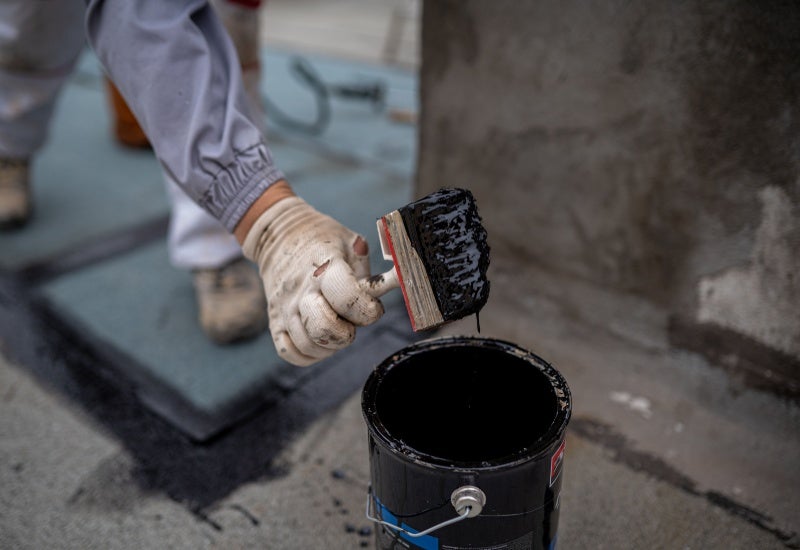Is Interior Waterproofing Different from Exterior Waterproofing?
At Triad Basement Waterproofing, we know that managing moisture and preventing water damage is key to maintaining the structural integrity of a building. In areas prone to heavy rain or where basements are below the water table, waterproofing can be especially important. Our professionals have been helping to repair and protect homes from water intrusion and damage since 1987, and today we want to help you learn more about the processes involved in waterproofing. Generally, we can divide the procedure into two categories: interior and exterior. Each method addresses different issues and offers unique benefits and challenges. Today, we will explore both methods in detail, outlining their pros and cons, and distinguish between the two to help you make informed decisions.

Identifying the Problems of Basement Leak
Basement leaks can be a homeowner’s nightmare, leading to costly repairs and significant damage if not addressed properly. Common signs of basement leaks include water stains on walls and floors, musty odors, peeling paint or wallpaper, and accumulation of mold and mildew. These issues typically arise from hydrostatic pressure, which forces water through cracks in the foundation, improper drainage, or issues with the building’s construction material. Identifying the root cause of the leak is the first step towards choosing the appropriate waterproofing method.
What Is Interior Waterproofing?
Interior waterproofing involves addressing water issues from inside the basement or foundation walls. This method typically includes the installation of drain tile systems around the perimeter of the floor, a sump pump to remove water, and the application of sealants on the walls and floor. These techniques are designed to manage water that has entered the building, redirecting it away from the basement and foundation structures.
Pros & Cons of Interior Waterproofing
Pros:
- Cost-effective: Generally less expensive than exterior waterproofing as it involves less labor-intensive excavation work.
- Less intrusive: Does not require extensive landscaping or external alterations to your home.
- Quick installation: Can often be completed in less time than exterior waterproofing.
Cons:
- Reactive approach: Primarily deals with water after it has entered the structure, which can sometimes allow for moisture-related issues to persist.
- Maintenance required: Systems like sump pumps require regular maintenance and electricity to operate.
What Is Exterior Waterproofing?
Exterior waterproofing aims to prevent water from entering the home by treating the exterior walls of the basement or foundation. This method often involves excavating around the house to the full depth of the foundation walls, then applying a waterproof coating or membrane to the exterior walls and installing drainage solutions like a French drain system around the perimeter.
Pros & Cons of Exterior Waterproofing
Pros:
- Proactive solution: Prevents water from entering the structure, addressing the issue before it can cause internal damage.
- Long-term solution: Tends to last longer with less maintenance since it deals directly with external moisture.
- Increases property value: Enhances the overall health of the building structure, potentially raising property value.
Cons:
- High cost: More labor and material intensive, leading to higher costs.
- Disruptive: Requires significant excavation, which can disturb landscaping and take longer to complete.
What is the Difference Between Interior and Exterior Waterproofing Methods?
The key difference between interior and exterior waterproofing lies in their approach and the extent of their application. Interior waterproofing is designed to manage water that has already entered the building, making it a more reactive measure. In contrast, exterior waterproofing is a preventative approach, stopping water before it breaches the foundation walls.
Choosing between interior and exterior waterproofing depends on several factors, such as the severity of the water issue, the construction of the building, the local climate, and budget considerations. In some cases, a combination of both methods may be the most effective way to ensure a dry and healthy basement environment.
Call Triad Basement Waterproofing
For over 30 years, Triad Basement Waterproofing has been solving moisture problems in basements across Washington D.C., Virginia, and Maryland. Our professionals are skilled at finding and fixing water leakage issues before they can grow large enough to cause problems with the structural integrity of your home. We have developed state-of-the-art solutions for basement water leakage and structural support. We also remove mold and mildew when it finds its way into your home and craft drainage solutions to make sure these issues don’t happen again. Call us now at (301) 532-7903 or visit our website at Triad Basement Waterproofing to schedule your free consultation.
